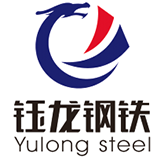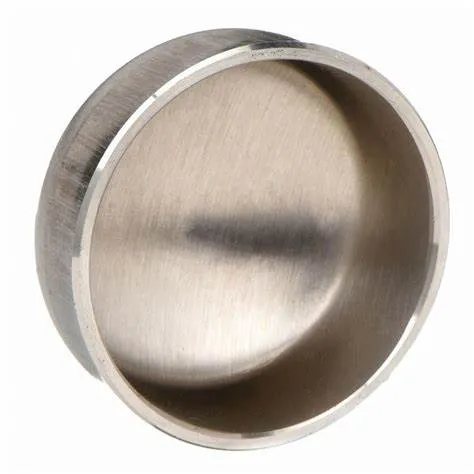JIS B2311 bụ ọkọlọtọ ụlọ ọrụ Japanese nke na-ekpuchi ihe nrụnye ọkpọkọ na-agbado ọkụ, gụnyere okpu ejiri na sistemụ ọkpọkọ. Okpu ịgbado ọkụ na-arụ ọrụ nke imechi njedebe nke ọkpọkọ, na-enye akara iji gbochie ntapu ma ọ bụ mmetọ. Nke a bụ mmalite nke okpu ịgbado ọkụ JIS B2311:
- 1. JIS B2311 Standard:
- - JIS B2311 ọkọlọtọ na-akọwapụta ihe achọrọ maka imewe, akụkụ, ihe, nrụpụta na nnwale nke ihe nrụnye ịgbado ọkụ, gụnyere okpu, na sistemu ọkpọkọ.
- - Ọkọlọtọ ahụ na-ahụ na okpu ndị emepụtara na-agbaso ụkpụrụ JIS na-emezu ụkpụrụ dị mma yana dakọtara na akụrụngwa ọkpọkọ ndị ọzọ.
- 2. Okpu ịgbado ọkụ:
- - Okpu ịgbado ọkụ, dị ka JIS B2311 si kwuo, bụ ihe dabara adaba iji kpuchie ma mechie njedebe nke ọkpọkọ n'enweghị nsogbu, na-enye nchebe na idobe iguzosi ike n'ezi ihe nke sistemu ọkpọkọ.
- - A na-eji okpu eme ihe n'ọnọdụ ebe njedebe ọkpọkọ chọrọ mmechi, ma ọ bụ na-adịgide adịgide ma ọ bụ nwa oge, iji gbochie ntanye, mmetọ, ma ọ bụ iji nye njedebe na usoro.
- 3. Ihe na ihe owuwu:
- - Okpu ịgbado ọkụ n'okpuru nkọwa JIS B2311 dị na ihe dị iche iche dị ka carbon steel, igwe anaghị agba nchara, na alloy steel iji zute ngwa dị iche iche.
- - A na-emepụta okpu ndị a site na iji usoro ihe owuwu ahaziri ahazi iji hụ na njikọ siri ike na nke na-adịghị agwụ agwụ mgbe welded na njedebe nke ọkpọkọ.
- 4. Ngwa na uru:
- - Okpu ịgbado ọkụ na-achọta ngwa n'ime ụlọ ọrụ dị iche iche, gụnyere mmanụ na gas, usoro kemịkalụ, ụlọ ọrụ mmiri na ihe ndị ọzọ ebe ọ dị mkpa ka ekpuchiri ọkpọkọ na nzuzo.
- - Caps na-enye nchebe na njedebe ọkpọkọ site na ihe ndị dị na gburugburu ebe obibi, gbochie mmetọ, ma na-enyere aka ịnọgide na-adị ọcha na iguzosi ike n'ezi ihe nke usoro ọkpọkọ.
- 5. Nwụnye na ịgbado ọkụ:
- - Omume nrụnye kwesịrị ekwesị, gụnyere nhazi ziri ezi, nkwadebe nke njedebe ọkpọkọ, na usoro ịgbado ọkụ, dị mkpa mgbe ị na-etinye okpu ịgbado ọkụ iji hụ na akara siri ike na nke na-adịghị agwụ agwụ.
- - Ịgbado ọkụ bụ usoro a na-ejikarị eme ihe maka ịkwado okpu na ọkpọkọ, na-enye mmechi dị nchebe na nke na-adịgide adịgide nke nwere ike iguzogide nrụgide, mgbanwe okpomọkụ, na mmiri na-asọba n'ime usoro.
- Na nchịkọta, okpu ịgbado ọkụ JIS B2311 bụ ihe dị oke mkpa eji na sistemụ ọkpọkọ iji mechie ma chebe njedebe nke ọkpọkọ na nchekwa. Okpu ndị a kwekọrọ n'usoro achọrọ iji hụ na ịdị mma, ntụkwasị obi, na ndakọrịta n'ime ngwa ụlọ ọrụ mmepụta ihe ebe mmechi na nchedo ọkpọkọ dị mkpa.
What Is a Butt Welding Cap and How Is It Used in Industrial Piping?
In industrial piping systems, end-of-line sealing and branch closures require robust solutions. A butt welding cap serves as a critical component for terminating pipes securely. By providing a seamless, welded closure, this fitting maintains system integrity, prevents leaks, and supports compliance with industry standards.
What Is a Butt Welding Cap?
A butt welding cap—also called a pipe end cap or buttweld end cap—is a round fitting designed to close off the end of a pipe. It’s manufactured to match the pipe’s outer diameter and schedule, with either a hemispherical or flat face. To install, both the pipe end and cap are beveled to form a V‑groove, enabling full‑penetration, fusion welds. Common materials include carbon steel, stainless steel, nickel alloys, and other engineered grades, chosen to satisfy pressure, temperature, and corrosion‑resistance requirements.
How Is Butt Welding Cap Used in Industrial Piping?
Butt welding caps find application across oil & gas, petrochemical, power generation, water treatment, and general process industries for both permanent and temporary closures. During hydrostatic testing, technicians install caps to seal off sections of piping while monitoring for leaks. In new construction or retrofit projects, caps terminate branch lines, future tie‑in spools, or dead‑end mains until system expansion. Welders prepare each joint by cleaning and beveling surfaces, aligning the cap precisely, and executing a root pass followed by filler passes per the qualified Welding Procedure Specification (WPS). Post‑weld heat treatment and non‑destructive examination (NDE)—such as radiography or ultrasonic testing—verify weld integrity and compliance with ASME B16.9 and related standards. Additionally, temporary caps enable safe isolation during maintenance, allowing for segment testing and dewatering under regulatory protocols.
Benefits and Best Practices
Butt welding caps offer a smooth‑bore transition that minimizes flow disruption and stress concentration. Their full‑penetration welds deliver exceptional structural strength and leak resistance. To optimize performance, engineers should:
Select caps with matching material grades and wall thicknesses
Adhere to proper bevel angles and joint fit‑up tolerances
Follow qualified WPS protocols rigorously
Consider cladding or protective coatings in corrosive environments to extend service life
Regular inspection and thorough documentation ensure long‑term reliability and safe operation under demanding conditions.
Butt welding caps are indispensable components for achieving durable, leak‑proof pipe terminations in a wide range of industrial applications.
Butt Welding Cap FAQs
What is a butt welding cap?
|
What materials are commonly used?
|
What standards govern butt welding caps?
|
How are butt welding caps installed?
|
Where are butt welding caps typically used?
|
What are the advantages of threaded caps?
|
















